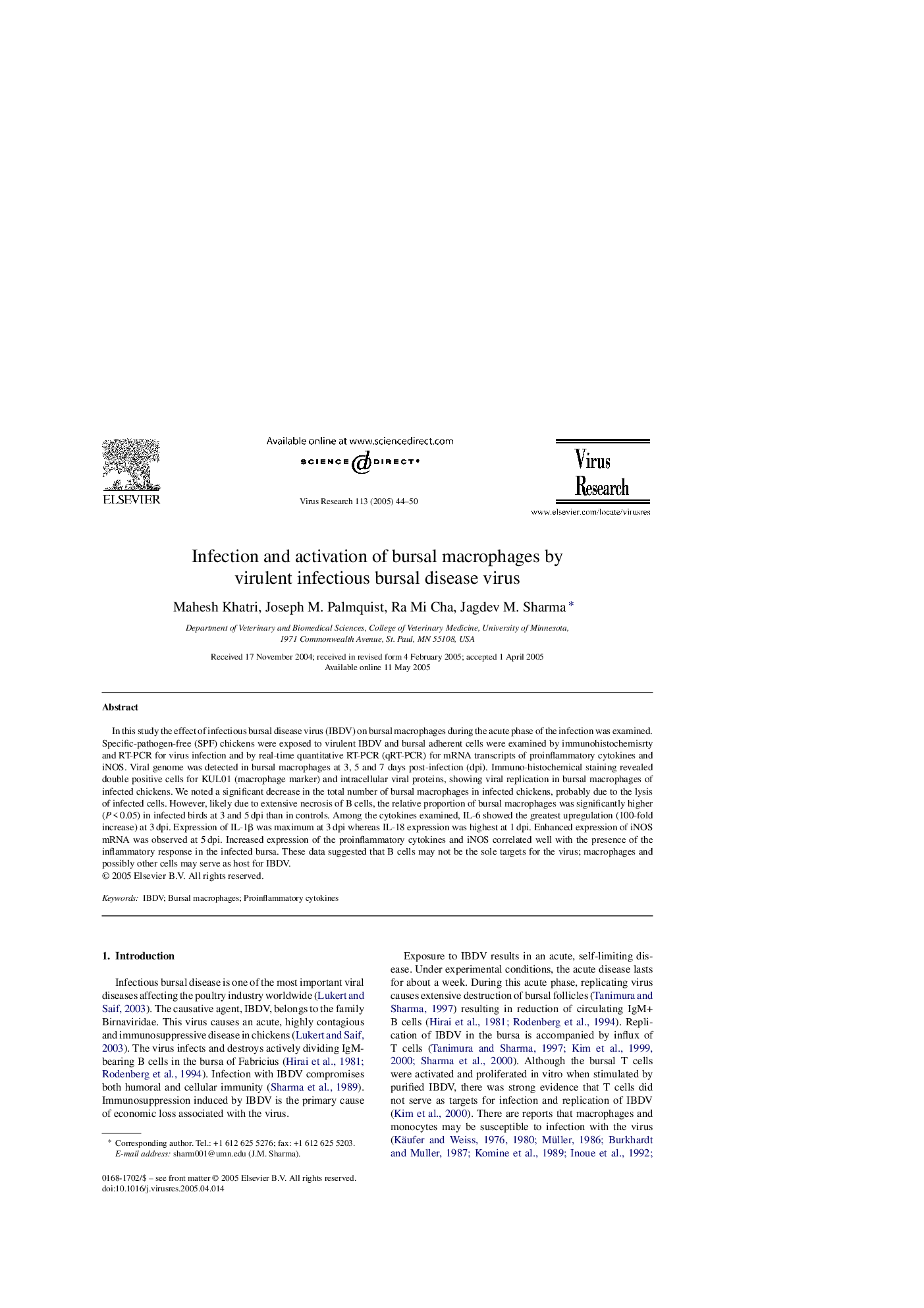| Article ID | Journal | Published Year | Pages | File Type |
|---|---|---|---|---|
| 9289328 | Virus Research | 2005 | 7 Pages |
Abstract
In this study the effect of infectious bursal disease virus (IBDV) on bursal macrophages during the acute phase of the infection was examined. Specific-pathogen-free (SPF) chickens were exposed to virulent IBDV and bursal adherent cells were examined by immunohistochemisrty and RT-PCR for virus infection and by real-time quantitative RT-PCR (qRT-PCR) for mRNA transcripts of proinflammatory cytokines and iNOS. Viral genome was detected in bursal macrophages at 3, 5 and 7 days post-infection (dpi). Immuno-histochemical staining revealed double positive cells for KUL01 (macrophage marker) and intracellular viral proteins, showing viral replication in bursal macrophages of infected chickens. We noted a significant decrease in the total number of bursal macrophages in infected chickens, probably due to the lysis of infected cells. However, likely due to extensive necrosis of B cells, the relative proportion of bursal macrophages was significantly higher (P < 0.05) in infected birds at 3 and 5 dpi than in controls. Among the cytokines examined, IL-6 showed the greatest upregulation (100-fold increase) at 3 dpi. Expression of IL-1β was maximum at 3 dpi whereas IL-18 expression was highest at 1 dpi. Enhanced expression of iNOS mRNA was observed at 5 dpi. Increased expression of the proinflammatory cytokines and iNOS correlated well with the presence of the inflammatory response in the infected bursa. These data suggested that B cells may not be the sole targets for the virus; macrophages and possibly other cells may serve as host for IBDV.
Keywords
Related Topics
Life Sciences
Immunology and Microbiology
Virology
Authors
Mahesh Khatri, Joseph M. Palmquist, Ra Mi Cha, Jagdev M. Sharma,
